All Dryers Are Customized
Engineers available to offer overseas service
All Year Round After Sale Hotline
Free Remote Technical Support and Train
Warranty: 1 Year
Certification: ISO9001
Application: River Sludge, Port sludge, Lake sludge, Municipal sludge, Slurry, Smelly sludge, Sand, Industrial sludge, Dumpling sludge
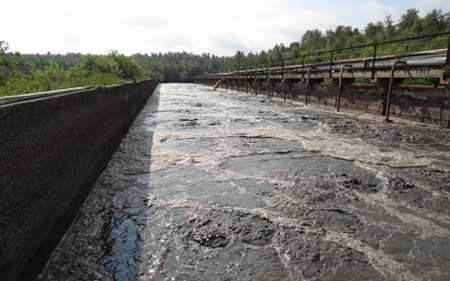
Before Drying
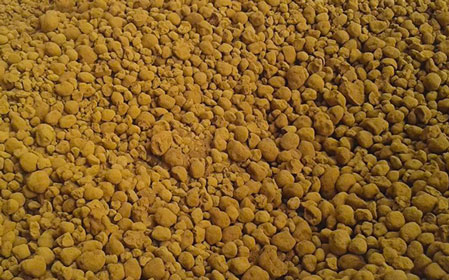
After Drying
River and lake sludge contains a great deal of organic matter and is easily putrefied and generate offensive odour, if left untreated. River and lake sludge ordinarily consists of water, inorganic compounds similar to natural rock, and fertile organic matter. It is also a valuable resource due to its organic matter calorific value which is equivalent to that of coal. Hence, owing to such properties, sludge is favourable to be reused for green and farmland, construction material or energy source.
Sewage sludge treatment is done to reduce sludge volume (moisture content reduction), decrease solid content and stabilize the sludge to reduce pathogens, eliminate offensive odors, and control the potential for putrefaction.
In sludge dewatering, it is crucial to reduce the moisture content of dewatered sludge. Vacuum filters requiring the use of non-organic coagulant have been often used in the past, but from the viewpoint of controlling dewatered sludge volume which can be increased by substantial chemical dosage, easiness in maintenance, reduction of water content, improvement in solids recovery rate, and considering the development of new organic coagulants, dewatering machines such as centrifuges using organic coagulant are now preferred.
Sludge drying is employed so as to make succeeding processes more effective and the sludge stable as required. There are two types of sludge drying, namely, natural drying and mechanized drying. In case of the latter, it is important to reduce water content as much as possible in the preceding dewatering process, as mechanized drying requires large energy. Moreover, since exhaust gas emitted from sludge drying processes contains high concentration of odour constituent, it is necessary to undertake countermeasures.
In sludge incineration, the multi-hearth incinerator had been often used due to its technical adequacy in the past. But now, the adoption of fluidized incinerators is becoming more accepted in view of the capacity of the this system to accept varying dewatered sludge characteristics, contain odour, reuse exhaust heat, and reuse incinerated ash. The exhaust gas in exhaust gas is collected to save on fuel and is particularly used for preliminary heating of air for burning, drying of dewatered sludge, and so on.
River/Port sludge is mainly from the river/lake/sea which is polluted. If not treated properly, it may take more pollution. But such sludge is hard to dry. There are much bound water, so that it is pasty. To overcome this problem, we designed drying equipment rotary drum dryer specially for River/Port/Lake/Pond sludge.
It contains rotary harrow, feeding and discharging system, hot air distributor and discharging system, W type guiding and lifting boards, S Type transporting way, three levels cylinders etc, and have over 100 patent technology, is multi-loop and three level drying machine.
With the combination function, it efficiently prevents sludge bonding again or bonding to the cylinders, heating energy is fully used, drying speed largely increased.
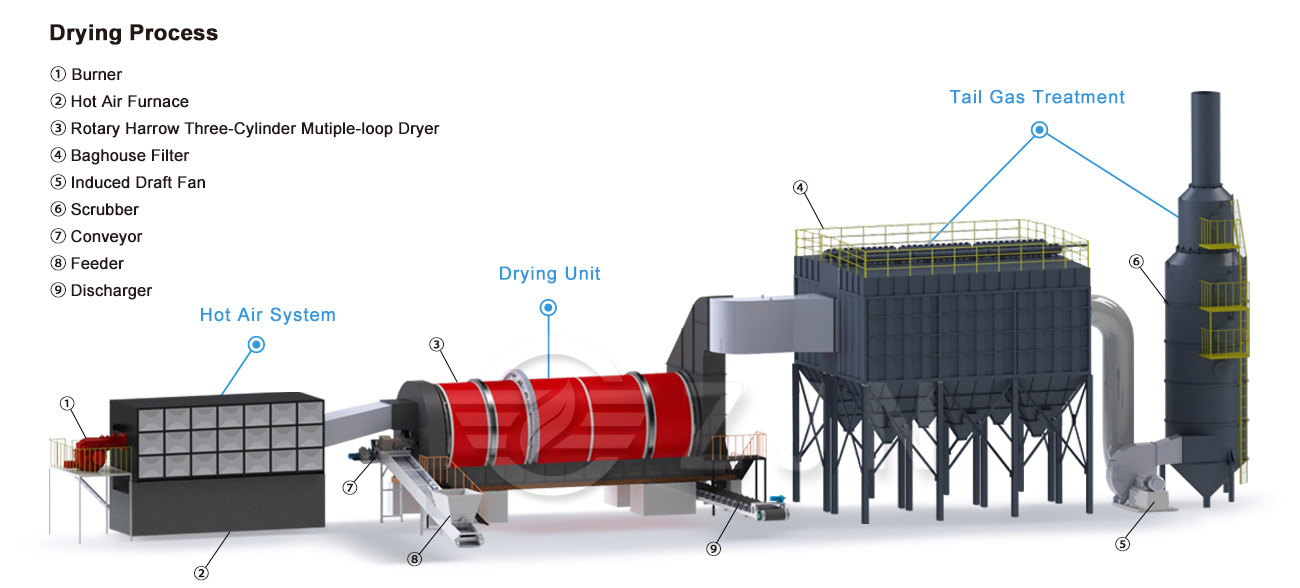
Sludge dryer production line generally includes the following system devices: heating system, conveying device, feeding system, discharging device, induced draft system, dust collector equipment, sludge dryer, instrument control system, etc.
ZJN sludge dryer is made of wear-resistant and high temperature resistant stainless steel, which has better quality and longer service life than ordinary steel. The equipment can use natural gas, steam, biomass particles, fuel oil, coal, boiler exhaust and other heat sources for heating. From the appearance point of view, the main body of the sludge dryer adopts a multi return structure, which is shorter than the traditional single drum dryer, occupies a smaller area, and is convenient for installation and disassembly. It effectively solves the problems of easy adhesion and wall sticking in the drying process of high humidity and high viscosity sludge. The new internal structure of the cylinder greatly expands the application scope of the equipment, making ZJN sludge dryer suitable for drying different types of high humidity and high viscosity sludge in many industries.
In addition, ZJN provides users with perfect customized service of sludge dryer. According to the characteristics of materials, output, drying degree, site size and other requirements, scientific and reasonable drying scheme can be designed to meet the diversified drying needs of users.
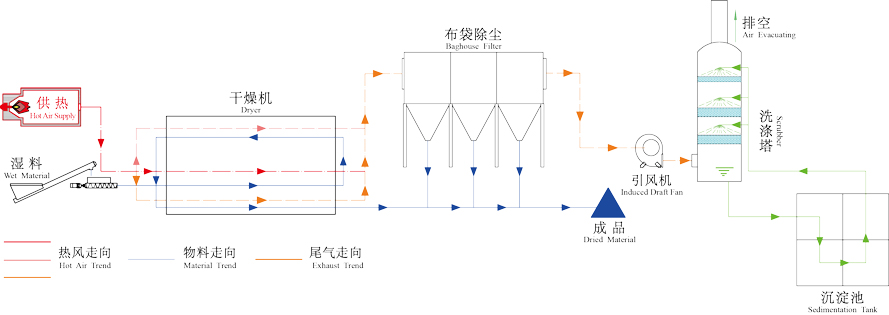
During the production process of ZJN sludge dryer, the wet sludge is transported into the drum through the feeding device. The "rotary rake crushing" dispersal device set in the drum first breaks the sludge into small particles, then, under the rotation of the combined lifting device, the material is constantly thrown up and scattered, and the uniform material curtain is lifted on the cross section of the cylinder. The area of heat exchange is greatly increased, the evaporation intensity of the equipment in unit time is greatly increased, the heat energy is effectively used and the heat loss is reduced. Therefore, ZJN sludge dryer will work efficiently and dry well.
The special exhaust mode can effectively avoid the phenomenon of moisture return at the end of the material and uneven drying. The whole drying process can be divided into three stages. While the sludge evaporates rapidly, the water vapor can be discharged from the end of each stage of drying. Compared with traditional drying equipment, ZJN sludge dryer has faster breaking speed, more scientific and reasonable arrangement of lifting device, making wet materials not easy to stick to wall and agglomerate in drying process, making equipment cleaner, environmental protection and energy saving, and greatly extending service life.
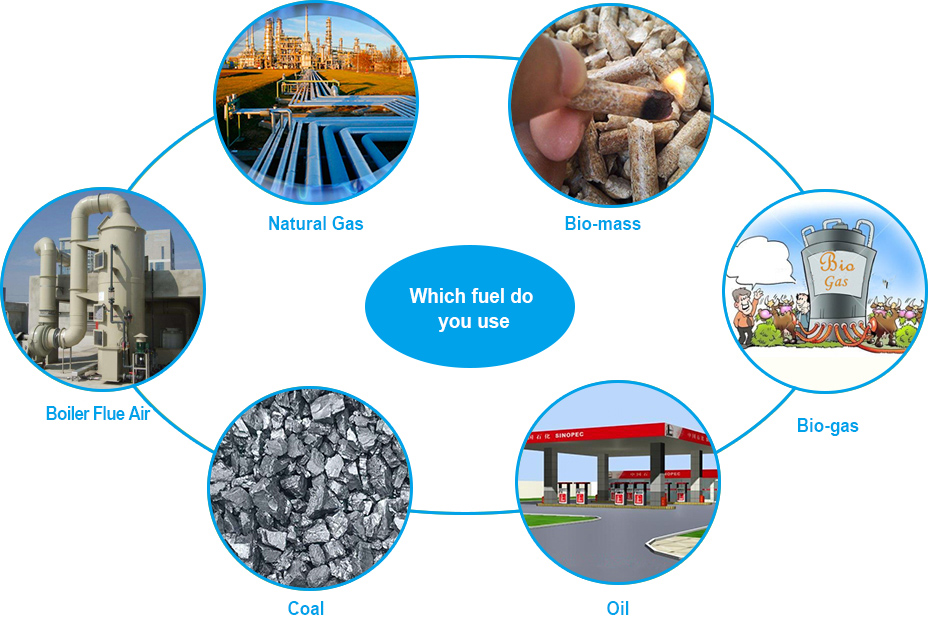
We have different hot air generating device for you. According to your Heat Source, no matter it is natural gas, bio-gas, coal, oil, bio-mass fuel or others, we match furnace, chamber, burner etc to be most suitable. What's more, the boiler flue gas can also be used as heat.
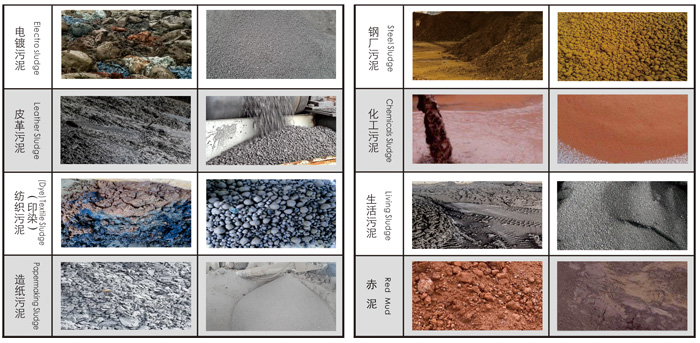
The sludge dryer is suitable for electroplating sludge, heavy metal sludge, leather sludge, chemical sludge, printing and dyeing sludge, textile sludge, pharmaceutical sludge, paper sludge, sewage plant sludge, municipal sludge, industrial hazardous waste sludge, alkali sludge, slag and other materials drying.
It is widely used in electroplating enterprises, metal processing enterprises, paper enterprises, textile printing and dyeing enterprises, pharmaceutical plants, sewage treatment plants, chemical enterprises and other industries.
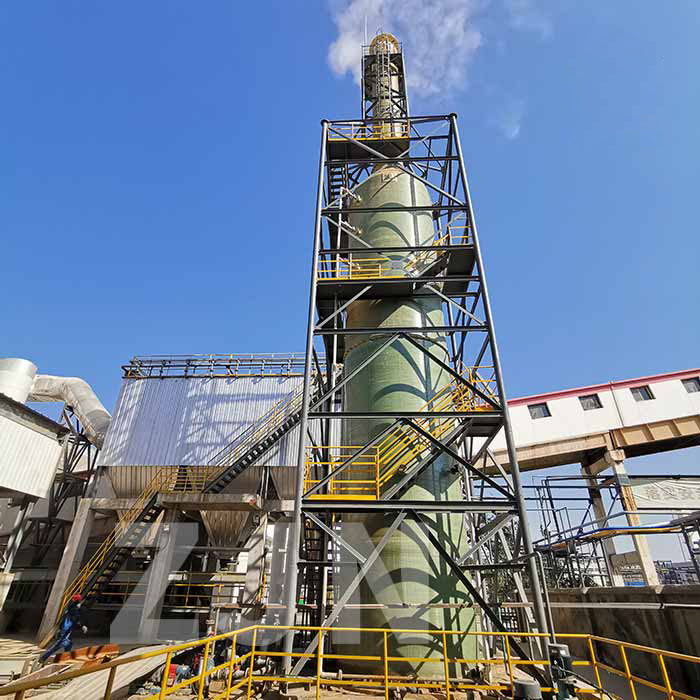
Scrubber
Scrubber systems (e.g. chemical scrubbers, gas scrubbers) are a diverse group of air pollution control devices that can be used to remove some particulates and/or gases from industrial exhaust streams.
The exhaust gases of combustion may contain substances considered harmful to the environment, and the scrubber may remove or neutralize those. A wet scrubber is used for cleaning air, fuel gas or other gases of various pollutants and dust particles. Wet scrubbing works via the contact of target compounds or particulate matter with the scrubbing solution. Solutions may simply be water (for dust) or solutions of reagents that specifically target certain compounds.
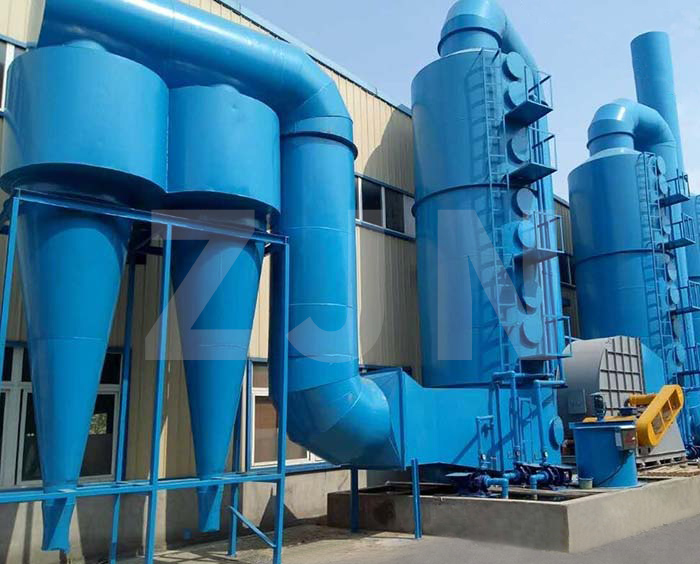
Cyclone Dust Collector
Centrifugal cyclone dust collector, the dust will be separated and recovered in the drying system, through the dry tail gas dust purification device of a cyclone dust collector, suitable for high dust concentration, large dust particles of exhaust gas dust removal operations, the dust collector has a simple structure, stable and reliable operation, long service life, and other characteristics.
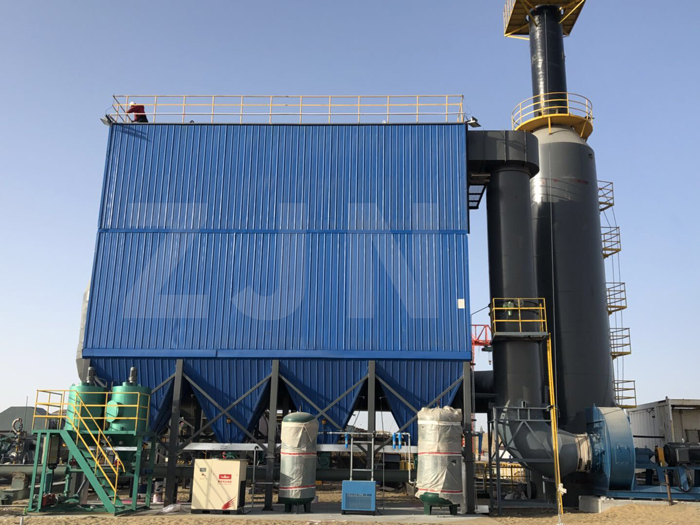
Baghouse
A bag house, also known as a bag house filter, bag filter, or fabric filter is an air pollution control device and dust collector that removes particulates or gas released from commercial processes out of the air.
Most baghouses use long, cylindrical bags (or tubes) made of woven or felted fabric as a filter medium. For applications where there is relatively low dust loading and gas temperatures are 250 °F (121 °C) or less, pleated, non woven cartridges are sometimes used as filtering media instead of bags.
Bag houses are very efficient particulate collectors because of the dust cake formed on the surface of the bags. The fabric provides a surface on which dust collects through the following four mechanisms:
Inertial collection – Dust particles strike the fibers placed perpendicular to the gas-flow direction instead of changing direction with the gas stream.
Interception – Particles that do not cross the fluid streamlines come in contact with fibers because of the fiber size.
Brownian movement – Sub micrometre particles are diffused, increasing the probability of contact between the particles and collecting surfaces.
Electrostatic forces – The presence of an electrostatic charge on the particles and the filter can increase dust capture.
A combination of these mechanisms results in formation of the dust cake on the filter, which eventually increases the resistance to gas flow. The filter must be cleaned periodically.
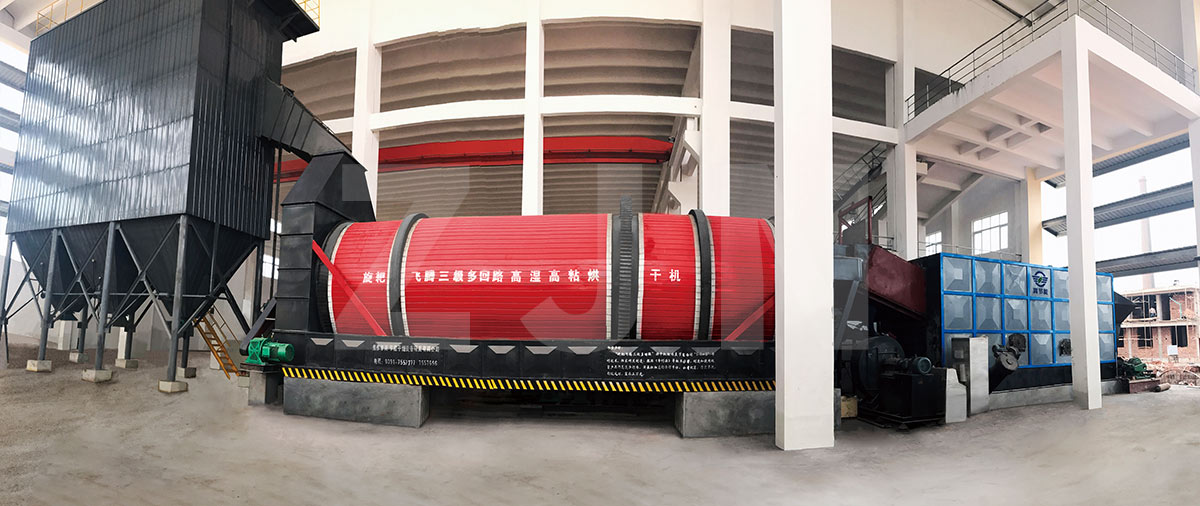
1. Design of high humidity and high viscosity sludge
In order to achieve the purpose of non sticking and non sticking, the internal structure of sludge dryer has been upgraded and modified by ZJN. Through the combined lifting device, the material moves at high speed under centripetal force, and is gradually breaked into smaller particles, and fully contacts with hot air, increases heating energy utilization and drying speed, and avoids sludge sticking to the wall of the cylinder.
2. Energy saving and low operating cost
The special multi-loop structure makes ZJN sludge dryer occupy less land area and effectively reduce the investment in infrastructure. In addition, the equipment has good thermal insulation performance and small heat loss. Compared with the traditional single drum equipment, fuel consumption is greatly reduced and the equipment operation cost is low.
3. Clean and dry, environmental protection up to standard
The equipment has good sealing performance, no dust particles overflow during drying process, and the production environment is clean. The waste gas can be discharged after being collected and filtered by exhaust gas collecting system, cyclone and baghouse (bag dust collector), and can meet the environmental protection standards. The user can use it without worry.
4. The entire drying system is centralized control by ABB/Simens PLC, easy to operate. In the drying equipment, drying, crushing, sieving and conveying process are combined to operate. The whole process is simplified and easy to control automatically. Fully automatic, easy and stable operation.
5. High thermal efficiency, long drying time, large treatment capacity. Down-flow in the first stage cylinder, counter-flow in the second stage cylinder, down-flow in the third stage cylinder, W+S type material transfer trend. Material mixed well with hot air. What’s more, the hot air volume can be distributed into three cylinder drum in different volume according to the wet material mositure content, which we use high mositure content, high air volume and temperature; medium himidity choose moderate volume and temperature; low humidity uses small volume and low temperature, making the material can be always in the ideal drying environment.
6. Drying equipment continuously working 24 hours, continuously feeding wet material and continuously discharging finished product.
Copyright ©2022 by Jiaozuo ZJN Environmental Protection Equipment Technology Co., Ltd.